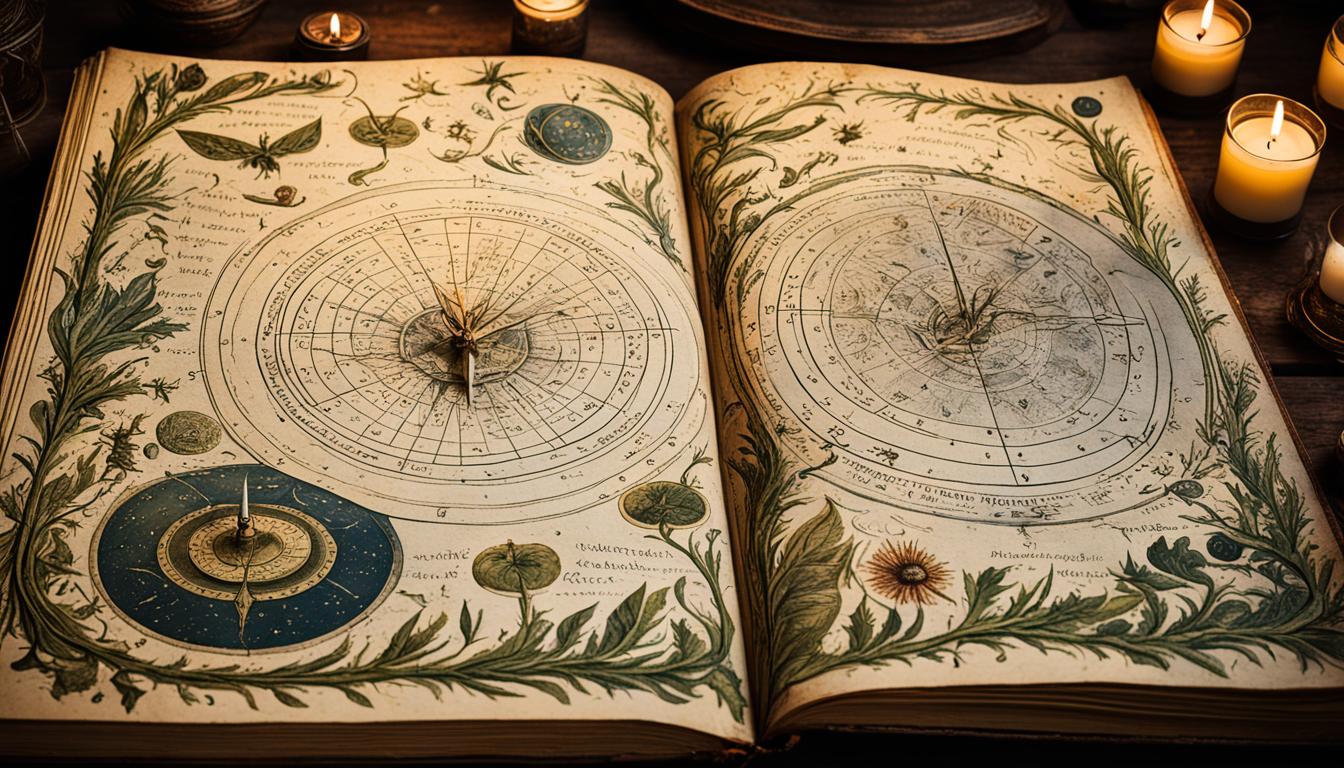In the world of medieval cryptography, the Voynich Manuscript is a true mystery. This mysterious book from the early 15th century has stumped experts and fans for years. Its unreadable script and strange pictures keep everyone guessing.
The book has 240 pages filled with odd plant drawings, star maps, and human figures. Its text, written in a secret script, moves from left to right. It uses 20-25 unique characters. No one knows where it came from, what it means, or why it was made.
Wilfrid Voynich bought it in 1912, and now it’s at Yale University’s Beinecke Rare Book and Manuscript Library. Tests show it was made between 1404 and 1438. The book talks about plants, stars, life, and recipes, making it even more intriguing.
Key Takeaways
- The Voynich Manuscript is a 15th-century enigmatic codex
- Its text remains undeciphered despite numerous attempts
- The manuscript contains 240 pages of unusual illustrations and text
- Carbon dating places its origin between 1404 and 1438
- It covers various topics including botany, astronomy, and biology
- Theories range from an unknown language to an elaborate hoax
Unveiling the Voynich Manuscript Mystery
The Voynich Manuscript is a mystery that has captured the world’s attention. It has six main sections that puzzle experts. These sections include 113 unknown plant species in detailed illustrations, astronomical drawings, and more.
Biologists are confused by the strange female figures in the biological sketches. Scholars are intrigued by the cosmological medallions and pharmaceutical drawings. The manuscript also contains pages filled with an unknown script.
The manuscript is known for its vibrant colors. It features green, brown, yellow, blue, and red in intricate drawings. But what makes it truly unique is the unknown script, known as Voynichese language.
This script combines Latin letters, Arabic numerals, and other unknown characters. Despite efforts, experts have not been able to decipher it.
The Voynich Manuscript has traveled across continents and centuries. It was once owned by Emperor Rudolf II and the famous occultist John Dee. Jacobus Horcicky de Tepenecz also left his mark on it.
Each owner added to the manuscript’s mystery. Today, its true purpose remains a secret, sparking endless theories and debates.
Decoding Attempts and Scholarly Debates
The Voynich Manuscript has been a puzzle for many code-breakers and scholars. Experts from World Wars I and II have tried to figure it out. Its strange symbols and pictures have led to many discussions about where it came from and what it means.

Some think the text has hidden alchemical symbols. Others believe it could be a Rudolfine manuscript from the time of Holy Roman Emperor Rudolf II. It seems to cover many early modern mysteries, like botany and astronomy.
Recently, researchers have used computers and language analysis to try to understand the text. In 2020, a German Egyptologist thought the language might be Hebrew. Other ideas include Arabic, Aramaic, or even a made-up language.
Even with all the efforts, the Voynich Manuscript is still a mystery. Some doubt if it’s real, thinking it might be a big trick. The ongoing debates keep us guessing, making us rethink history and language.
The Cultural Impact and Enduring Fascination
The Voynich Manuscript Mystery has made a big impact on popular culture. It has inspired many TV shows, books, and video games. Its beauty and secret script have made it a challenge for scholars and code-breakers.
In 2020, Yale University made a big move by putting the whole manuscript online. This let more people access it, making it even more popular. The move sparked new talks about historical mysteries, cryptography, and language.
Outside of school, the Voynich Manuscript is seen as a symbol of unsolved puzzles. It keeps inspiring creative works and sparking conversations. This mystery from the early modern times shows our deep curiosity and love for the unknown. It will likely continue to be a part of science and popular culture for a long time.

Leave a Reply